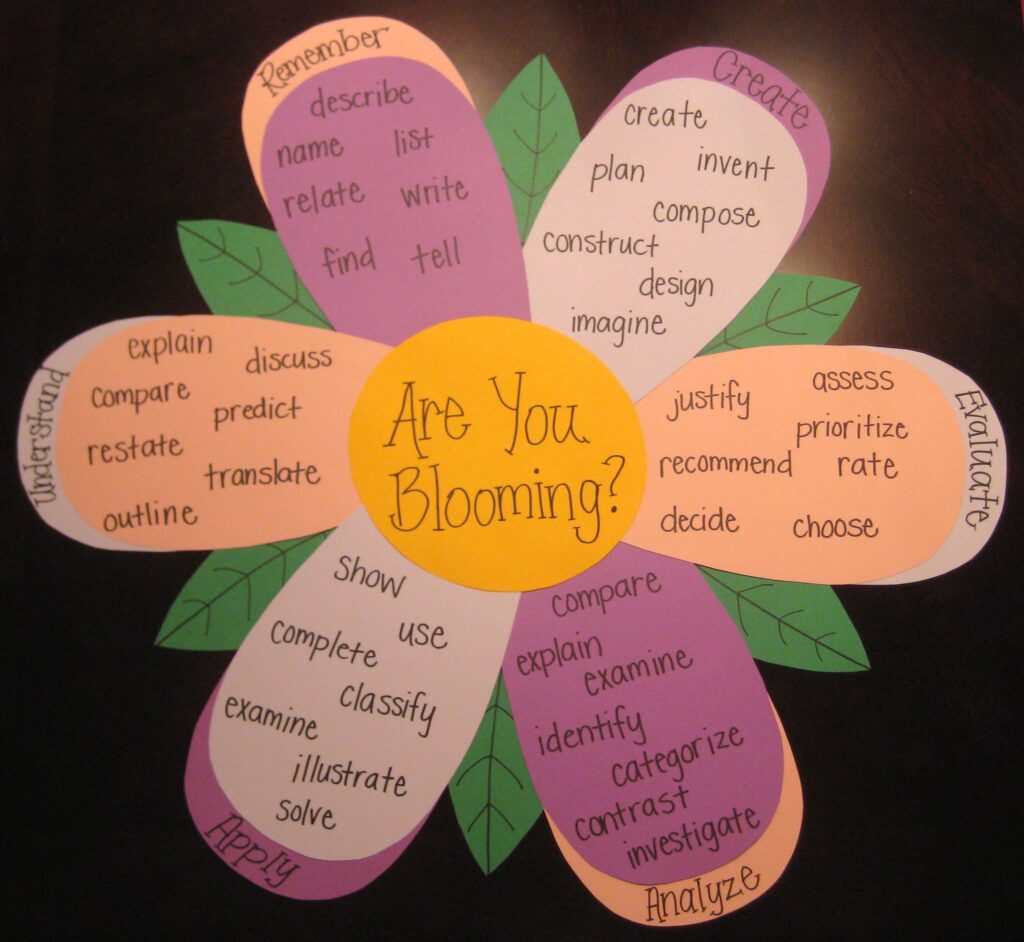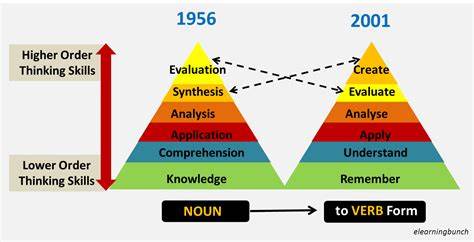Bloom’s Taxonomy (1956)
In 1956, Benjamin Bloom with collaborators Max Englehart, Edward Furst, Walter Hill, and David Krathwohl published a framework for categorizing educational goals: Taxonomy of Educational Objectives. Familiarly known as Bloom’s Taxonomy, this framework has been applied by generations of K-12 teachers and college instructors in their teaching.

The framework elaborated by Bloom and his collaborators consisted of six major categories: Knowledge, Comprehension, Application, Analysis, Synthesis, and Evaluation. The categories after Knowledge were presented as “skills and abilities,” with the understanding that knowledge was the necessary precondition for putting these skills and abilities into practice.

Knowledge
Comprehension
Application
Analysis
Synthesis
Evaluation

The Revised Bloom Taxonomy (2001)
A group of cognitive psychologists, curriculum theorists and instructional researchers, and testing and assessment specialists published in 2001 a Revision of Bloom’s Taxonomy with the title A Taxonomy for Teaching, Learning, and Assessment.

Remembering
Understanding
Applying
Analyzing
Evaluating
Creating
Written By: – Pooja Singh